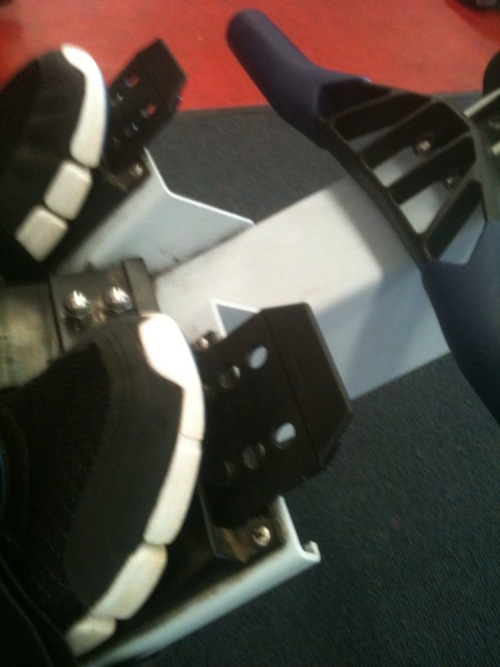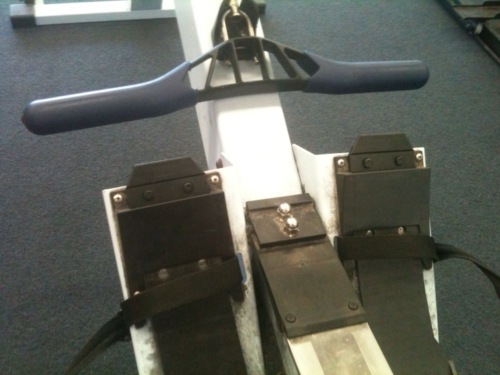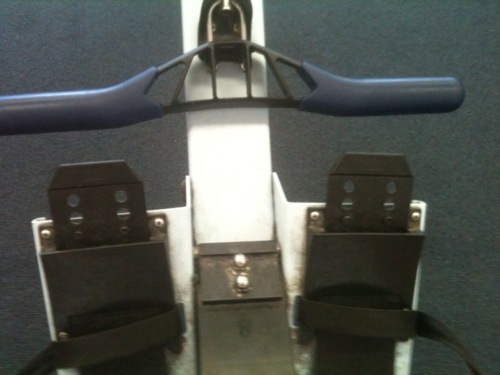A Foot Position Primer
Foot position and shoe choice may not appear to be among the most exciting facets of using the Concept2 Indoor Rower, but by paying these small concerns their due attention, you may reap large changes in comfort and performance.
As a member of the Australian national training squad, I have the chance to regularly observe the preferences of World and Olympic medalists. What I have realized is that there isn’t a right or wrong shoe choice or foot position, but that each athlete should consider their options and maximize their time on the machine.
Foot Position
I’ll talk about foot position first—a routinely ignored aspect of training and racing. By foot position I’m referring to the optimal setting height of the rower’s feet on the machine.

On the odd occasion I’m in a commercial gym, I’ll often see that as people come and go, they pay no attention to their foot position. More often than not, they’ll just hop on the indoor rower and start rowing. Most elite rowers have spent enough time on the machine that adjusting their foot position is automated. They know where their optimal foot position is and make the necessary adjustments as soon as their bum hits the seat.
Foot position is relative to height and specifically shin length. The longer your shin, the lower your feet need to be. One of my teammates, Bryn Coudraye, is 6’8” and has llllloooonnnng shins. They look silly. He, correspondingly, has his feet as low as they can go—what we’ll call setting one—and uses his freaky bone structure to pull a 5:48 2K.

Bryn also doesn’t wear shoes. This allows his feet to be even lower, since the heel width of shoes affects foot position (more on that later). I’m at the other end of the scale as the shortest member of our squad at a squeak under 6’2”. Although I’m short for our squad, I’m relatively tall compared to the overall human population, and with regular shin length for my height, have (depending on shoe type) my feet at setting two or three.

To adjust your feet correctly, pay attention to how you feel next time you get on the Concept2 Indoor Rower. If your feet are too high, you limit your length towards the flywheel, called front-end length. Front-end length is basically how close the handle comes to the flywheel when approaching for the subsequent stroke. If your feet are too high, then your legs will not properly allow for your backside to compress close enough to your ankles; by limiting your stroke length your overall technique will be compromised.
Alternatively, if your feet are too low, then you’ll get enough front-end length, but your leg drive won’t be optimal. Often when a person’s feet are too low you’ll see them bouncing back and forth as the elasticity of their leg tendons and ligaments responds to the over-compression of their legs. If your feet are too low, your bum will be close enough to your ankles, but you won’t properly engage your leg drive. You will also allow for over-stretching of your lower back, thus putting your lumbar in a vulnerable position. When the feet are too low, the rower can reach too far over his or her knees, and this puts the back in a weak position, not just for injury risk but also for power application. As a rough guide, you want your knees to be in the general vicinity of your arm pits at the catch position (when the handle is at its closest to the flywheel).
There are some exceptions to this. If you lack flexibility or if you haven’t been spending enough time on the indoor rower and your gut is in the way, then you’ll have some difficulty achieving the optimal catch position with your knees just under or inside your arm pits. If you are limited by either your flexibility or rotundness, then you should have your feet on the lower side, relative to your height. If your stomach size is the limiting factor, then resist the urge to bounce your butt off your ankles and instead work to stretch through your knees when trying for stroke length.
